White House Press Release Falsely links Gender Violence (and FGC) to Foreign Nationals
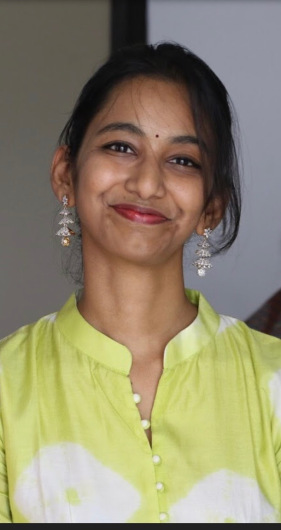
By Geethika Kodukula (Disclaimer: Although they graciously accepted it, the views in this post are my own and do not necessarily reflect those of Sahiyo or its founders. I am not myself an immigrant, Muslim, or an FGC survivor.) In January, the White House put out a press release wherein they mentioned a Department of Justice report about the Entry of Foreign-Born Terrorists into the United States and the “connection” to Gender-Based Violence. The press release noted more than 20 “statistics” and names of people who have either been convicted of terrorist activities or conspiring against the US between 2001 and 2016. All of the cited examples were of people keeping Islamic faith, children of visa lottery recipients, or children of foreign-born nationals. Nowhere in this press release is there mention of the multitude of hate-crimes against people of color in 2017 or the half a dozen shootings in the month of January that are more pressing and real concerns for national security. As a statistician, I can tell you with certainty that numbers do not mean anything if you do not have a baseline to compare against. For example: let’s examine statistics about crime from the FBI. In 2016, there were 6,121 hate crimes in the United States. However, before believing that we must leave the country because it is unsafe, it is important to note that only 11.6% of the total number of jurisdictions monitoring hate crimes reported any incident. In other words, 88.4% of jurisdictions had no incident report of a hate crime whatsoever. Cherry picking numbers and placing them onto an entire group does not make the statistical interpretation valid. According to the White House Press Release, two ‘threats’ immigrants bring into America are gender-violence and crime. Let me rephrase that – the current administration, led by this man, who hired people like Rob Porter and David Sorensen who touted their professional prowesses in response to them giving their wives black-eyes, is worried about immigrants bringing gender violence into the country. Gender Violence is pervasive across the world. “Global estimates by the World Health Organization indicate that about 1 in 3 women worldwide has experienced violence in their lifetime.” [WHO | Violence against women] Factually, there is no continent on which there hasn’t been some form of sexual harassment or assault, including Antarctica. If you want some stats on the issue, go to UNWomen. I could (and desperately want to) pick apart each of the statistics provided in the White House statement intended to make us clutch our pearls and shriek at the sight of a ‘foreign-national’. However, I will resist the urge and stick to the point that made me decide to write this piece. From the White House statement: “According to a 2016 report by the Center for Disease Control and Prevention (CDC), the number of women and girls at risk of undergoing female genital mutilation (FGM) was three times higher in 2012 compared to 1990. The CDC report states that the increase was entirely a result of the rapid growth in the number of immigrants from FGM practicing countries.” One concern/question that immediately comes to mind: what was their methodology to predict that increase? Let’s check the report: “For comparability of terminology with earlier analyses, those at risk consisted of the number who potentially underwent or would potentially undergo FGM/C in the future if the population of foreign-born women and girls and their children in the United States had the same rates of FGM/C as the countries in which the girls or their mothers had been born.” To put it in perspective, the statement assumes that if a country has, say, 20% prevalence of FGC, and we have 100 immigrants from that country, 20 of those immigrants are at risk for FGC/M. The inference is then that after people emigrate to the United States, they behave in the same manner as they would in the country from which they migrated. The study does not take into account assimilation of immigrants, a difference in socioeconomic status, nor that FGM/C is banned in the United States. The CDC study itself notes that ‘These differences would very likely result in reduced risk for FGM/C’. Whoever wrote this press statement did not read the entire CDC study, or they just choose to conveniently leave out that point. Alternatively, they must have thought that no one would read the actual CDC study in its entirety and instead the public would align with the narrative that we must all run from the scary foreign-man? FGC is a real public health problem prevalent around the world, including in the United States. We are all trying to understand, reason, and reduce its incidence. We would be rejoicing if as a shift from the norm, the statement had said, ‘We can not tolerate this practice anywhere; here on U.S. soil, or across the world. We will work towards grassroots education, de-stigmatizing, and progress in the elimination of FGC.’ The White House Press Release leaves me to wonder, is the U.S. still a champion of human rights across the world, or, are they okay as long as any violation that occurs is just not in their backyard? FGC has its origins rooted in the patriarchy and suppression of female sexuality. Expecting the Trump administration to understand the nuanced situation of harmful religious practices is almost pointless. It is a war and not a battle. However, I will be damned if I stand by and watch these false “champions of women’s safety and health” demonize people without caring about the implications of their statements. At this point, if a ‘foreign national’ pulls his ear three times before eating his lunch, it seems the White House will find a reason to make it an issue relating to economic/health/crime/gender-violence. The gender-violence statistics in the United States are staggering. For many of us, it is our day job to end it – day-in and day-out. Gender-violence, like many forms of violence, is about power. Don’t let
Finally in the spotlight: Female Genital Cutting is getting national attention in Sri Lanka
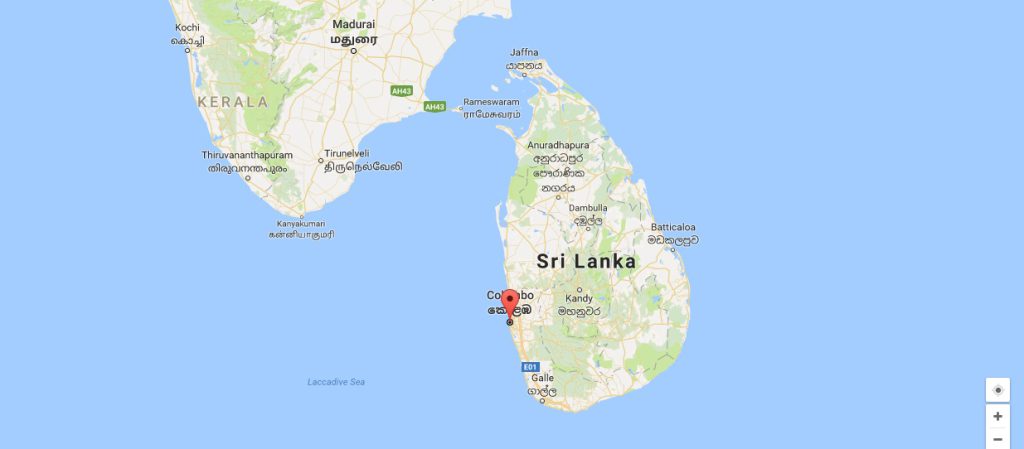
Until a few months ago, Female Genital Cutting (FGC) in Sri Lanka was spoken about only in whispers within practicing communities and in a few news articles. Since last month, however, the issue has suddenly attracted the attention of the mainstream national media and has been the highlight of some crucial discussions among government ministers and activists. In Sri Lanka, FGC is practiced among the Dawoodi Bohras (who call the practice Khatna or Khafz) and among the Sunni Moor and Malay communities (who call it Sunnath). While the Bohras cut the clitoral hoods of girls at the age of seven, the Moors and Malays cut baby girls when they are 40 days old. (Read more about it here.) FGC is internationally recognised as a violation of the rights of women and children, and is illegal in several countries around the world. However, Sri Lanka — like its neighbour India — does not have a specific law against FGC/Khatna/Khafz/Sunnath. In order to push for a law banning FGC, a group of human rights activists and lawyers have been gathering testimonies of Sri Lankan FGC survivors. These testimonies have drawn recent media attention, and were also formally submitted to the Sri Lankan Parliament Sectoral Oversight Committee in a meeting earlier this month. This long overdue exposure of the practice of FGC in Sri Lanka is strongly linked to the controversies around the country’s personal laws for minority communities like Muslims. The background The public debate about FGC has been brought about in the midst of the discussion in Parliament on reforms to the MMDA (Muslim Marriage and Divorce Act), which was enacted by the Sri Lankan Parliament in 1951. According to this website, “The origin of Sri Lankan MMDA stems from a code of law on marriage and divorce exported from Batavia (present day Indonesia) in 1770 during the Dutch rule. This law has gone through a process of codification over a period of time and is based on Sharia law and Islamic legal practices. However, the Act also includes provisions pertaining to local customs unknown to Islamic law…” In addition, Article 16 in the Fundamental Rights chapter of the 1978 constitution of Sri Lanka enshrined MMDA and Muslim Personal Laws in Sri Lankan law through the following statement: “All written and unwritten law that existed prior to the 1978 Constitution is ‘valid and operative’.” This has been interpreted as legal validation of MMDA and Muslim Personal Laws and local customs even if they contradict, or are inconsistent with, the fundamental rights of Sri Lankan citizens. As the Sunday Observer stated in this article, “personal Laws exist to provide the minority communities the extra protection they need, but instead, they violate the fundamental rights of people in those communities.” The MMDA reform debates have been ongoing for decades, but they recently came back into serious discussion, with the Sri Lankan government’s application to regain the GSP+ (Generalised Scheme of Preference) from the EU. This preference was taken away from Sri Lanka sometime in 2010 citing non-compliance with international Human Rights standards. One of the criteria cited by the EU to grant this preference back to SL, was to bring about reform to the MMDA; claiming it as a rights violation against women and children. Citing these rights, many Muslim Women’s activists and lawyers urged for a ban on the practice of FGC, and gathered many testimonies from victims, which were presented to the Parliamentary Oversight Committee on Women and Gender (POCWG) set up to address the MMDA reforms. Hope for the future In the past two weeks, with increasing media attention on FGC in Sri Lanka, some spokespersons from the country’s Dawoodi Bohra community have responded by defending the practice. Their argument is that FGC is “just a nick” and not harmful, should not be called “mutilation”, and that it is done for personal hygiene and for religious reasons. However, in a positive sign, a group of senior ministers in the Sri Lankan government reviewed the practice of FGC and came to an agreement that the ritual needs to be treated as a public health issue. The meeting, held last week, included the Minister of Justice, the Minister of Women and Child Affairs and the Chairperson of the National Committee on Women. The ministers indicated that they would work with the local Muslim communities and help raise awareness about the issue of Female Genital Cutting.
Detroit arrest: It is time for Bohras to get serious about ending Female Genital Cutting
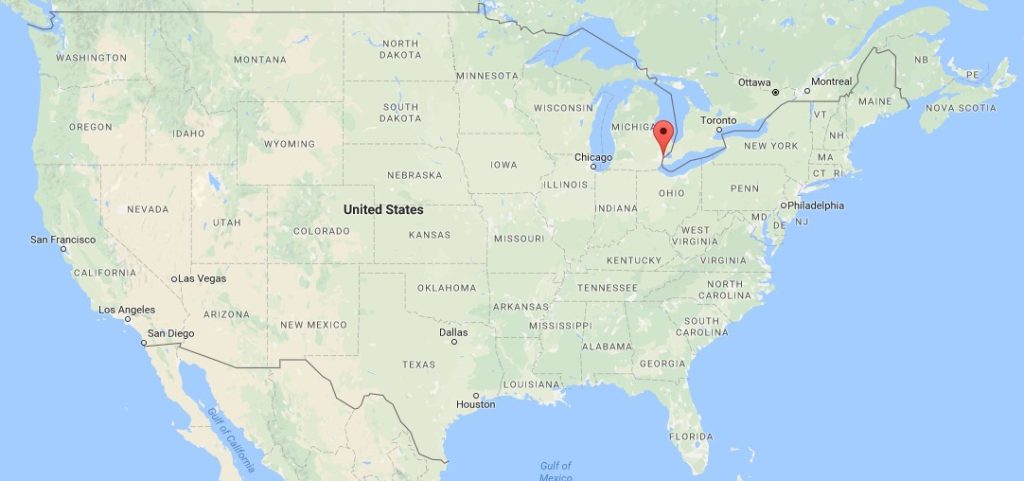
Sahiyo is shocked and truly saddened by the news that a Bohra doctor in Detroit, USA, has been arrested on charges of performing Female Genital Cutting (FGC) on minor girls in the community. While the allegations in this particular case are yet to be proven, we believe it is a serious breach of medical ethics for any doctor to perform this non-medical procedure that is categorically recognised as a form of gender-based violence and a violation of human and child rights. In countries like the USA where FGC is a criminal offence, we believe that parents, too, cannot be absolved of the responsibility to follow the law. In the light of this Detroit case, Sahiyo would like to call on the entire Bohra community to make a concerted effort to bring an end to this unnecessary and potentially harmful tradition. We believe it is also imperative for the community leadership to call for a clear, unambiguous, world-wide end to the practice of khatna, khafz or female genital cutting. What is the Detroit case all about? On April 13, 2017, a Detroit emergency room doctor was arrested and charged with performing FGC on minor girls in the United States. This is believed to be the first time someone was brought up on charges under 18 U.S.C. 116, which criminalizes FGC. According to the U.S. Federal complaint, Jumana Nagarwala, M.D., 44, of Northville, Michigan performed FGC on 6 to 8 year old girls out of a medical office in Livonia, Michigan. Some of these girls’ families reportedly traveled inter-state to have the doctor perform FGC. At this time, the complaint is merely an allegation and the defendant is presumed innocent unless and until proven guilty beyond a reasonable doubt in a court of law. The federal complaint states that phone call records and surveillance video show that in February 2017, two Minnesota girls and their parents came to Detroit for a “special girls trip”. They stayed at a hotel in Farmington Hills and ended up visiting Nagarwala, thinking they were seeing the doctor because their “tummies hurt”. Instead, the girls underwent FGC. The complaint also indicates that other children, including children in Detroit, might have undergone FGC by Nagarwala between 2006 and 2007. To see the official press release, click here. Bohras have been aware that FGC is illegal in USA Among Bohras, khatna or khafz, involves cutting a part of the clitoral hood or prepuce of a 7-year-old girl. Many Bohras have argued that this mild, ritual “nick” is not the same as the supposedly “African” practice of FGM, which can involve severe cutting of the clitoris and labia (classified by the World Health Organisation as Types II and III of FGM/C). However, the Bohra form of khatna very definitively falls under Type I FGM/C, for a good reason. However “mild”, khatna still involves the cutting and altering of female genitals for non-medical reasons. No health benefits of the practice have been recorded, and in fact several Bohra women have been increasingly speaking up about the negative physical, emotional and sexual consequences they have faced. For the past one and a half years, particularly after three Bohras in Australia were convicted under the country’s anti-FGM laws, there has been increasing awareness in the community about the fact that khatna is considered a violation of human rights by the United Nations. In countries where the practice is illegal, including the US, UK, Australia, Canada and other parts of Europe, Bohra jamaats have themselves issued clear resolution letters, asking community members not to practice khatna or khafz on girls anymore. In fact, the Detroit jamaat issued such a resolution letter to all its members on May 11, 2016. So despite all this awareness, why are some Bohras — like the parents of the girls in Minnesota — still choosing to break the law and subject their daughters to FGC? A deeply-entrenched social norm The main reason, according to Sahiyo, is that female genital cutting is a deeply-entrenched social and cultural norm for Bohras and all other communities practicing the ritual. A variety of reasons, often contradictory, are cited for following the practice: many say that khatna curbs a girl’s sexual desire and prevents promiscuity, some claim that cutting the clitoral hood enhances sexual pleasure, others claim it is done for hygiene or health. However, a recent online survey conducted by Sahiyo found that among Bohra women, the most common reason cited for khatna is “religious purposes” or tradition: most people simply continue the practice without questioning, because they believe it is a necessary cultural requirement. Sahiyo is concerned that these beliefs might be getting compounded by certain mixed messages conveyed by the community leadership. In April 2016, even as several Bohra jamaats were issuing resolution letters against khatna, community leader Syedna Mufaddal Saifuddin covertly endorsed the practice during a public sermon in India without mentioning the word khatna. He said that “the act” must be done discreetly for girls irrespective of what people say. Then in June 2016, the Syedna issued a statement to clarify his official stand on khatna. It stated that the resolution letters issued in various international jamaats were still valid for Bohras living in those nations. However, in the same statement, Syedna also endorsed khatna as a “religious obligation” necessary for “religious purity”. These ambiguous messages can be confusing to community members who may then be caught between abiding by the laws of their land and abiding by their leader’s wishes. Sahiyo therefore strongly urges the community leadership to unequivocally and unambiguously ask all Bohras across the world to now stop the practice of khatna for girls. A law is not enough Overcoming deeply-ingrained social norms like FGC is difficult, but not impossible. Sahiyo recognizes that laws are important to help reinforce that a particular practice is against human rights. However, we also recognize that to truly find sustainable change within a community and to end this form of violence, we must seek ways to change mindsets
Speak Out on FGM petition to the UN collects more than 500 signatures
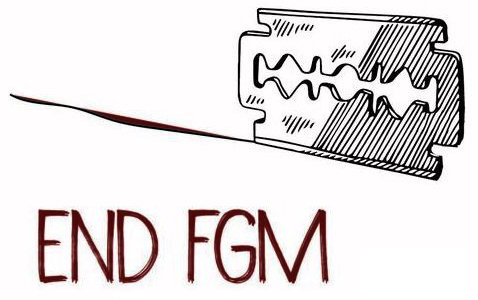
In December 2015, Speak Out on FGM – a collective of Bohra khatna survivors – launched a signature petition on Change.org, appealing to various ministers in the Indian government to end Female Genital Cutting (khatna) in India. It was the first time that 17 Bohra women had publicly come out, as signatories, to speak against the practice, and the petition helped break the silence on Khatna both in the community and the media. Today, the petition has amassed more than 83,000 supporters. A year since this pioneering petition, on December 10, 2016, Speak Out on FGM launched a new petition on Change.org, this time addressed to the United Nations. The petition was launched on Human Rights Day – the last day of the global 16 Days of Activism campaign to end gender-based violence, and it has already received 544 supporters. The new petition reflects the growing, open support for the cause of ending khatna: this time, 32 Bohra women listed their names as signatories to the petition. This petition is an appeal by survivors of khatna, calling upon the United Nations to strengthen its recognition of India as one of the countries where FGC is practiced. While UN agencies do acknowledge that FGC is prevalent in “certain ethnic groups in Asian countries…in India, Indonesia, Malaysia, Pakistan and Sri Lanka”, Indonesia is the only one of these countries that is included in the UN’s official FGC-prevalence statistic of 200 million girls cut in 30 countries. Girls cut in India are thus excluded from these statistics of global prevalence (learn more here). More global recognition of FGC would help spread awareness on the issue of khatna in India. More significantly, it would help Bohra women and men make official appeal to the Indian government to take policy-level steps to end FGC. Currently, there is no law against FGC in India, and the matter is still barely recognised as prevalent in the Indian Bohra community. Since the religious and administrative headquarters of the Bohras are located in Mumbai, and since India houses approximately half the international Bohra population of 1.5 to 2 million, ending khatna in India can go a long way in ending the practice among all Bohras. Through this petition, Speak Out on FGM hopes to speed up the process of instituting government and international mechanisms to highlight and promote measures to eradicate FGC. To sign the petition, click here.
Human Rights Day panel at New England School of Law
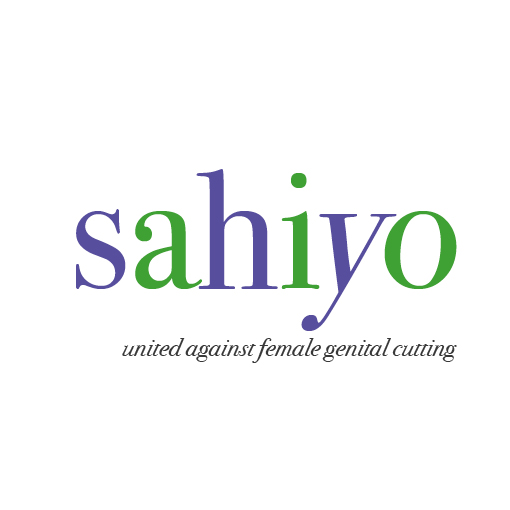
On March 10, 2016, Sahiyo Co-founder Mariya spoke at the New England School of Law for the event: Human Rights Day Panel: A Poignant Discussion on Female Genital Mutilation. Prior to the beginning of the event, the panel organizers played the Hindustani Times news report FGM: India’s Dark Secret to provide context that FGM/C is more global issue than previously acknowledged. In acknowledging the global nature of FGC, currently, the state of Massachusetts in the United States is in the process of passing legislation criminalizing all forms of FGC with the bill – “An Act Establishing Civil and Criminal Penalties for Female Genital Mutilation” (House Bill H1530; Senate S1116). Other speakers on the panel included members of the Massachusetts FGM Task Force who have been diligently working on the FGC issue for number of years. These members included Katie Donahue Cintolo, Women’s Bar Association and Susan McLucas, director of Sin Saunuman (Health Tomorrow) organization. Professor Dina Francesca Haynes, a human rights lawyer and professor at the New England School of Law who has worked on hundred of FGC cases also spoke.The event was presented by the International Law Society and sponsored by the Immigration Law Association, the Charles Hamilton Houston Enrichment Program, and the Center for International Law and Policy.
Before sharing your khatna story, consider your country’s own legislation against FGC

Recently, a Sahiyo Volunteer asked us a very important question regarding sharing your khatna story and potential legal ramifications against a family. We always find it tremendously encouraging and inspiring for all those who do share their khatna story with us, but at Sahiyo we want those who share their stories to be made aware of any potential legal ramifications for sharing your story publicly. This information is in no way given to discourage you from sharing your story, and you should alway consult with a lawyer to gain more specific legal advice on this issue. However, at Sahiyo, our organization does seek to be transparent and honest with all those who connect with us. Could identifying as a Bohri who has been cut thru social media or media potentially lead to legal ramifications for family or friends who live in a country where FGC has been outlawed, and that country suddenly decides to crack down on it? ALL COUNTRIES: For more information on Female Genital Mutilation/Cutting Resources listed by Country where it is known to be an indigenous practice or by populations of refugees/immigrants – See more at http://www.refugeelegalaidinformation.org/female-genital-mutilation-grounds-seeking-asylum#countrylist CANADA: For more information, please refer to Dilshad Tavawalla’s blog post on Female Genital Mutilation or Khafd/Khafz or Khatna and Canadian Laws. You can also visit Ontario Human Rights Commission – FGM in Canada UNITED STATES: This is not a simple question. It will depend on 1) If a person was cut in 1995, then it was not a crime in the U.S. or any state because the federal law against FGM/C was passed and went into effect in 1996. 2) If the person was cut in 1997, but outside the U.S., the federal law was in effect, but only for FGM/C committed in the United States. Very few states had laws that early on to bring an FGM/C case. 3) If the person was transported from U.S. soil for the purposes of being cut and was cut abroad on or after November 2013, then the vacation cutting provision applies. 4) There is also the issue of statute of limitations. How long after the cutting can a criminal or civil case be brought under federal or state law? Is the Statute of Limitation “tolled” (put on hold or frozen) until the 18th birthday and then starts running? If yes, how long after the 18th birthday does the person or prosecutors have? 5) The federal law applies to both children and adults within its jurisdiction. The person who underwent FGM/C or someone legally allowed to act on their behalf would have to bring the charge or bring it to the attention of authorities who would bring the charge. That legal person could be a parent, guardian or court-appointed advocate. If you are concerned, ask the participants when and where the cutting took place to see if it was illegal in the United States. That’s a start. For more information, please refer to Equality Now’s Fact Sheet – Female Genital Mutilation in the United States. Disclaimer: No Legal Advice Intended. This blog includes general information and may reference topics on legal issues and developments in the law. Such materials are for informational purposes only and may not reflect the most current legal developments. These informational materials are not intended, and must not be taken, as legal advice or legal opinion on any particular set of facts or circumstances. You need to contact a lawyer licensed in your jurisdiction for advice on specific legal issues problems.
Human Rights Day Panel at New England School of Law

On March 10th, 2016, Sahiyo Co-founder, Mariya Taher, will be speaking on the Human Rights Day Panel at the New England School of Law in Boston. More details are below: Topic: A Poignant Discussion on Female Genital Mutilation Date: March 10, 2016 Time: 4:00 pm Location: New England School of Law – 154 Stuart St, Boston, MA 02116; Cherry Room Guest Speakers: Susan McLucas, Mariya Taher, Katie Cintolo, Dina Haynes Sponsored By: International Law Society, Immigration Law Society, Charles Hamilton Houston Enrichment Program, Center for International Law and Policy
